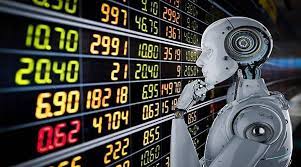
In the ever-evolving landscape of financial markets, technology continues to play a significant role in shaping how traders operate. One of the most notable advancements in recent years is the rise of forex robots, also known as expert forex robot (EAs). These automated trading systems have gained popularity among traders seeking to capitalize on the forex market’s potential while minimizing manual intervention. But what exactly are forex robots, how do they work, and what are the implications for traders? Let’s delve into the world of forex robots to find out.
Understanding Forex Robots
Forex robots are computer programs designed to execute trades in the foreign exchange (forex) market on behalf of traders. They operate based on pre-defined algorithms and trading strategies, which are typically programmed by experienced traders or developers. These algorithms analyze market conditions, price movements, and other relevant factors to identify trading opportunities and execute trades automatically.
How Forex Robots Work
Forex robots operate on the principle of algorithmic trading, where predefined rules and criteria guide their trading decisions. These rules can range from simple to highly complex, depending on the sophistication of the robot and the strategy it employs. Some robots may rely on technical indicators such as moving averages, RSI (Relative Strength Index), or MACD (Moving Average Convergence Divergence), while others may incorporate fundamental analysis or machine learning techniques.
Once deployed, forex robots continuously monitor the market for signals that match their programmed criteria. When a suitable trading opportunity is identified, the robot executes the trade according to its instructions, including parameters such as entry and exit points, position size, and risk management rules. By automating the trading process, forex robots aim to eliminate emotional biases and human errors, while also enabling faster execution and round-the-clock trading.
Benefits of Forex Robots
The appeal of forex robots lies in their potential to offer several benefits to traders:
- 24/7 Trading: Forex robots can trade around the clock, taking advantage of opportunities in different time zones and market sessions, which may not be feasible for human traders.
- Emotion-Free Trading: Emotions such as fear and greed can often cloud judgment and lead to irrational trading decisions. Forex robots execute trades based on predefined rules without being influenced by emotions, thereby potentially reducing the impact of psychological biases.
- Backtesting and Optimization: Before deploying a forex robot in live trading, traders can backtest their strategies using historical data to assess their performance under various market conditions. This allows for optimization and refinement of trading strategies to enhance their robustness and profitability.
- Diversification: Forex robots can trade multiple currency pairs simultaneously, allowing traders to diversify their exposure and spread risk across different instruments and markets.
Considerations and Risks
While forex robots offer several advantages, traders should be aware of the following considerations and risks:
- Strategy Dependence: The performance of a forex robot is highly dependent on the underlying trading strategy. Strategies that may have performed well in the past may not necessarily yield the same results in the future, as market conditions are subject to change.
- Over-Optimization: Excessive optimization of trading strategies based on historical data can lead to curve-fitting, where the strategy is overly tailored to past market conditions and performs poorly in real-time trading.
- Market Volatility: Rapid changes in market conditions, such as high volatility or unexpected news events, can pose challenges for forex robots, potentially leading to losses if the algorithm fails to adapt or react appropriately.
- Technical Issues: Like any software, forex robots are susceptible to technical glitches, connectivity issues, or execution delays, which can impact their performance and reliability.
Conclusion
Forex robots represent a powerful tool in the arsenal of modern traders, offering the potential for automation, efficiency, and systematic trading. However, it’s essential to approach their use with caution and diligence, understanding that they are not a one-size-fits-all solution and come with their own set of risks and challenges. By combining the capabilities of forex robots with human oversight, critical analysis, and risk management, traders can harness their benefits while navigating the complexities of the forex market with greater confidence and resilience.